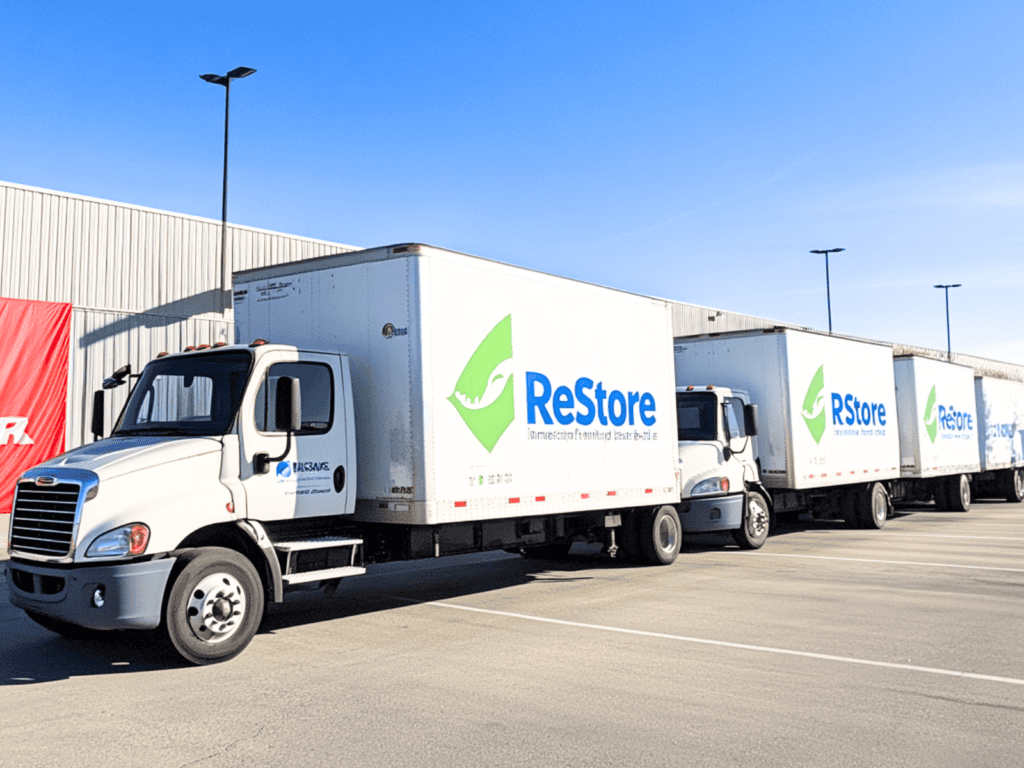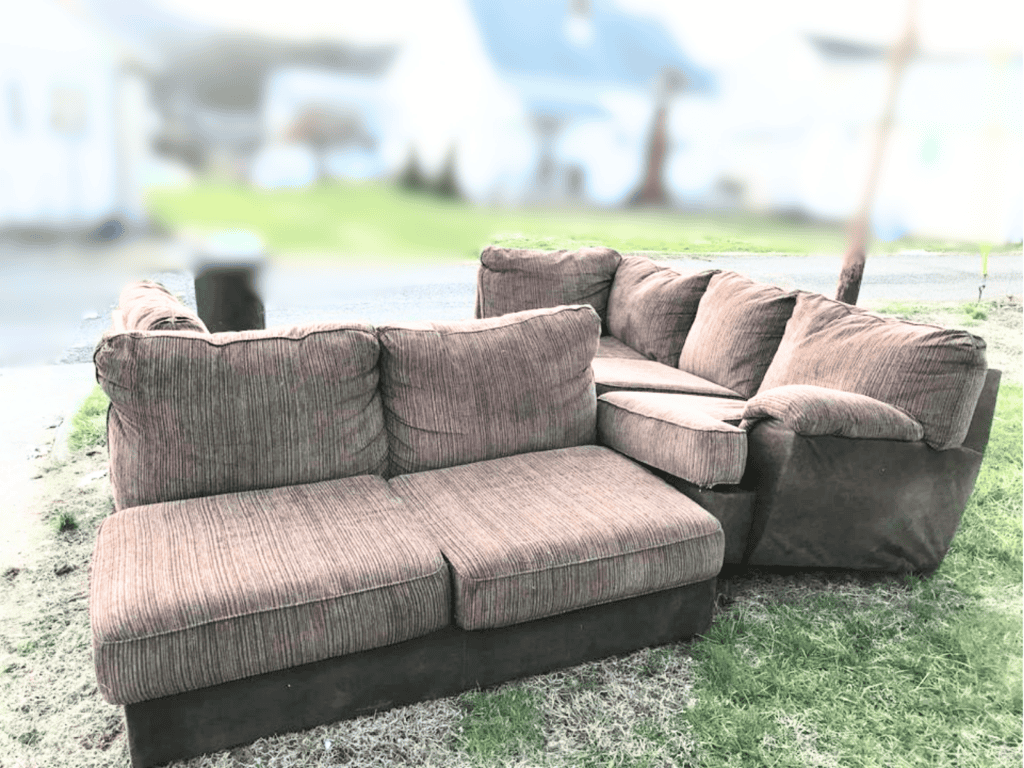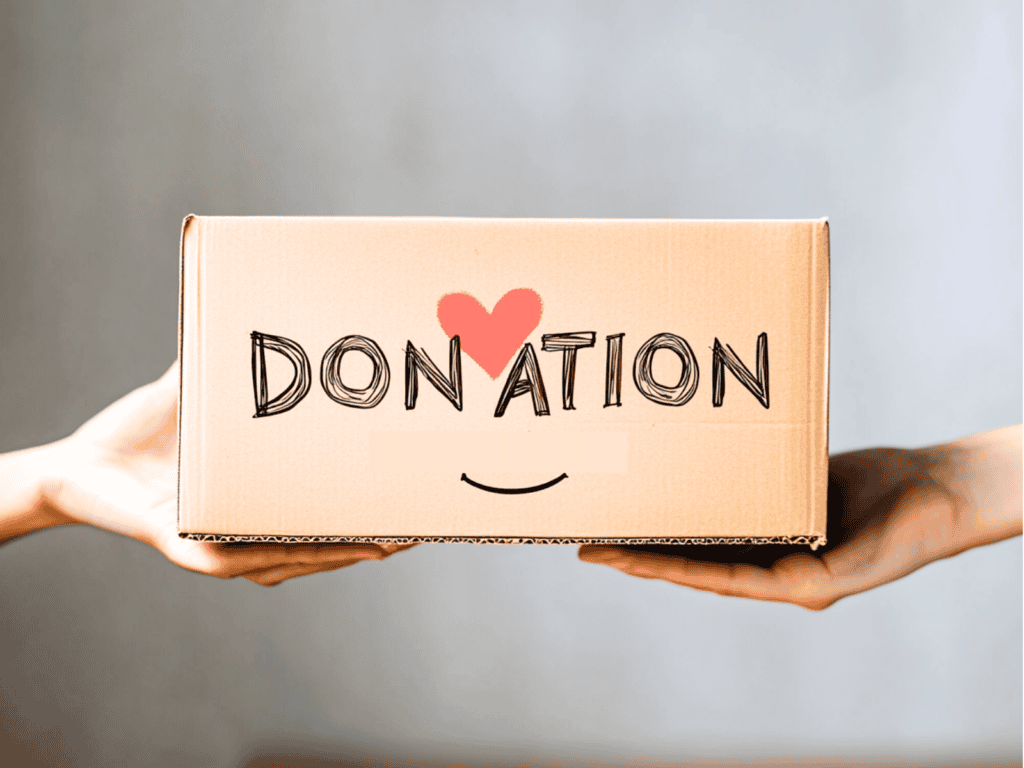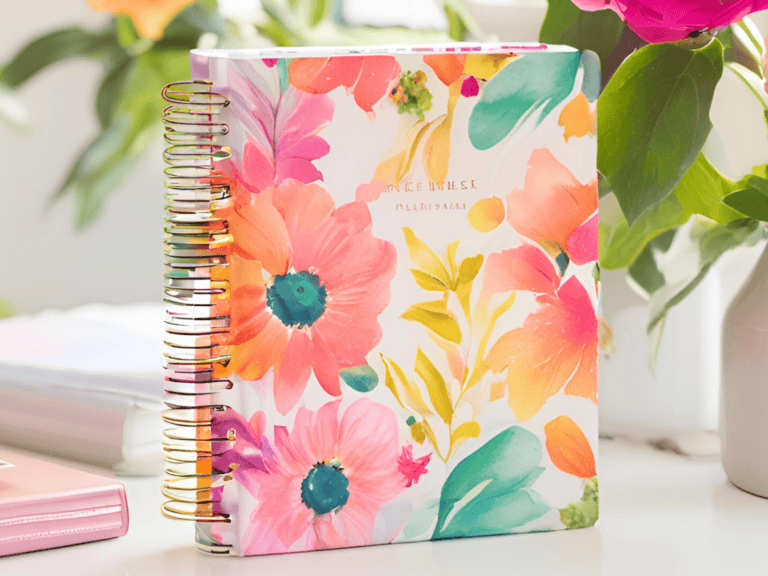Where to Donate Stuff: Your Ultimate Guide to Declutter & Give Back
Ever wondered where to donate stuff when you’re decluttering or downsizing? Donating your unwanted items isn’t just about making space in your home; it’s a powerful act that ripples through your community and the environment.
Positive Impact on the Environment and Community
When you donate, you’re giving items a second life. This reduces the need to manufacture new products, saving precious resources and energy. It also keeps usable goods out of landfills, lessening the strain on our planet.
Your donations support charitable organizations, providing them with resources to help those in need. This could mean clothing for a job interview, furniture for a new home, or books for a child’s education.
Tax Benefits of Donating
Donating to qualified charities can also bring you tax benefits. You might be able to deduct the fair market value of your donated items from your taxable income. Remember to get a receipt from the organization for your records.
Remember, every item you donate has the potential to make a difference. It’s a simple act with a big impact.
Finding the Right Organizations to Donate To
Choosing the right place to donate your items ensures they reach those who most need them.

1. Goodwill and Salvation Army
Both of these well-known organizations accept a wide range of items, making them convenient options for donating various household goods. They both typically accept:
- Clothing and shoes
- Toys and games
- Housewares
- Electronics
- Appliances
- Furniture
- Books
- Sporting equipment
- Cars, trucks, SUVs, boats, and campers
Exceptions:
- Goodwill: Also accepts jewelry and collectibles.
- Salvation Army: It’s important to check with your local Salvation Army as acceptance of certain items, particularly furniture and large appliances, may vary by location.
Remember to confirm with your local branch, as specific acceptance policies can sometimes differ.
2. Homeless and women’s shelters
These organizations often need a variety of essential items to support those in need. Consider donating:
- Coats, jackets, and sweaters
- Pants, shirts, and dresses
- Shoes and boots
- Hats, gloves, and scarves (especially during colder months)
- Blankets and pillows
- Towels and washcloths
- Dishes and utensils
- Cleaning supplies
Remember to check with your specific local shelter to confirm their current needs and any specific donation guidelines. Some shelters may have restrictions on certain items, such as used bedding.
3. Habitat for Humanity Restores
This organization is a great option for donating items related to home improvement and furnishings. Proceeds from sales support Habitat for Humanity’s mission of building affordable housing. They typically accept:
Furniture
- Sofas, chairs, and tables
- Beds, dressers, and nightstands
- Bookcases and shelving units
- Desks and office furniture
Appliances
- Refrigerators, stoves, and ovens
- Washers and dryers
- Dishwashers and microwaves
- Small appliances like toasters, coffee makers, and blenders
Home Improvement Items
- Lumber, plywood, and drywall
- Doors, windows, and trim
- Plumbing and electrical fixtures
- Flooring, tile, and paint
- Hardware, tools, and gardening supplies
Remember that items should be in good, usable condition. Check with your local ReStore for specific donation guidelines and any restrictions on certain items.
4. Dress for Success
This organization empowers women seeking employment by providing professional attire and support services. They typically accept:
- Women’s new or nearly new suits
- Women’s professional separates (blouses, skirts, pants, dresses)
- Women’s dress shoes
- Handbags and briefcases
- Jewelry and accessories (scarves, belts, etc.)
- Unopened cosmetics and toiletries
All items should be clean, in good condition, and ready to wear. Check with your local Dress for Success affiliate for specific donation guidelines and any additional needs they may have.
5. Local Churches
Churches often serve as vital community hubs for collecting and distributing donations to those in need. While specific needs and accepted items may vary by church, here’s a general list of what they may accept:
- Non-perishable food items
- Clothing
- Household goods
- Furniture
- Hygiene products
- Baby items
It’s always best to contact your local church directly to confirm their current needs and any specific donation guidelines they may have.
Donating Different Types of Items
Let’s break down where to donate specific items you might have:

1. Clothing & Accessories: Where to Donate
Everyday wear
Gently used clothes, shoes, and accessories are welcomed at Goodwill, Salvation Army, or local shelters.
Professional attire
Suits, dresses, and dress shoes can help someone land a job. Donate them to Dress for Success or Career Gear.
Winter warmth
Donating coats to One Warm Coat will keep someone cozy during the colder months.
Maternity & baby clothes
Local maternity homes and women’s shelters are great options.
Formal wear
Look for organizations like Becca’s Closet or Cinderella’s Closet to help someone feel special on their big day.
2. Furniture and Household Goods
Household Goods
Smaller household items like kitchenware and linens can be donated to Goodwill or Salvation Army.
Large Furniture
Check with local charities like The Furniture Bank Network or Salvation Army, which often have pick-up services for bulky items. Habitat for Humanity ReStore, local churches, or local furniture banks are also great options.
3. Electronics and Appliances
Computers
Check with organizations like the National Coalition Against Domestic Violence or the National Cristina Foundation for Computers and Electronics.
Cell Phones
Cell Phones for Soldiers accepts cell phones and other small electronics to benefit military members and veterans.
Non-Working Electronics
To avoid environmental harm, consider recycling electronics that are no longer in working condition through responsible e-waste recycling programs. Check with your local municipality for options.
Electronics that can be refurbished
Some organizations, like the National Cristina Foundation, refurbish donated electronics and provide them to low-income individuals or organizations.
4. Books and Media
Donate books to your local library, Operation Paperback (for troops overseas), or Better World Books. DVDs and CDs can often be donated to libraries or thrift stores.
5. Toys and Games
Gently used toys and games can bring joy to children at shelters or through organizations like Stuffed Animals for Emergencies. Consider donating baby gear to Baby2Baby or local pregnancy centers.
6. Vehicles
Organizations like Volunteers of America and the National Kidney Foundation accept vehicle donations, using the proceeds to fund their programs.
7. Medical Equipment
If you have gently used medical equipment like wheelchairs, crutches, or hospital beds, consider donating them to organizations like Project C.U.R.E. or MedWish International, which distribute medical supplies to those in need around the world.
8. Eyeglasses
Organizations like the Lions Club International and New Eyes for the Needy accept donations of used eyeglasses, which are cleaned, repaired, and distributed to needy people.
Remember, every item you donate has the potential to make a positive impact. Choose the organizations that align with your values and the types of items you have, and rest assured your generosity will make a difference.
Remember, every item you donate has the potential to make a positive impact. Choose the organizations that align with your values and the types of items you have, and rest assured your generosity will make a difference.
Creative Donation Ideas
Think outside the box when it comes to donating. Your unique items could bring joy and opportunities to others:

9. Musical Instruments
Donate gently used instruments to schools, community centers, or music programs to foster creativity and learning.
10. Craft Supplies
Art programs, nursing homes, and after-school centers often welcome donations of yarn, fabric, paints, and other craft materials.
11. Sports Equipment
To help kids stay active, donate balls, bats, gloves, and other sports equipment to youth leagues or after-school programs.
12. Leftover Building Materials
Habitat for Humanity ReStore or similar organizations can use your leftover paint, tiles, or lumber in their construction projects.
Special Considerations for Donating
Keep these tips in mind to make your donation experience smooth and rewarding:

Non-Profit vs. For-Profit
- Non-profit thrift stores: Proceeds support charitable causes.
- For-profit consignment shops: You might earn money if your items sell, but be aware of their fees and selectivity.
Pick-Up or Drop-Off
- Check for pick-up services: Some organizations, like Goodwill and the Salvation Army, offer pick-up for larger items like furniture.
- Plan your drop-off: Smaller items can usually be dropped off at designated donation centers during their business hours.
Tax Receipts
Always ask for a donation receipt, especially for larger or more valuable items. This is essential for claiming tax deductions.
Donation Apps & Platforms
Apps like GiveBackBox and Zealous Good connect you with charities and sometimes even arrange for free shipping or pick-up.
Alternative Options for Unwanted Items
If the donation isn’t the right fit, explore these alternatives:

Selling or Trading
Online marketplaces
List items on platforms like eBay, Facebook Marketplace, or Craigslist. If you’re short on time or energy, consider my go-to strategy for larger items left behind by tenants: simply place them on the curb, snap a picture, and post them as FREE on Facebook Marketplace. It’s amazing how quickly things disappear!
Local consignment stores or flea markets
These options can help you earn some cash for your unwanted items, especially if they’re in high demand or vintage.
Upcycling or Repurposing
Get creative
Turn old t-shirts into cleaning rags, transform jars into storage containers, or repurpose furniture with a fresh coat of paint.
DIY Inspiration
Find countless ideas online for upcycling and giving new life to your belongings.
Recycling or Disposing Responsibly
Check local recycling guidelines
Many communities have specific programs for recycling electronics, appliances, and other materials.
Properly dispose of hazardous waste
Items like batteries and paint require special handling; contact your local waste management facility for guidance.
Preparing Your Items for Donation
Before you drop off your items, a little preparation goes a long way.

Cleaning and Organizing Your Items
Cleanliness is key
Wash clothes, wipe down furniture, and dust off electronics. A little effort ensures your donations are ready for their new home.
Organize and sort
Group similar items together (clothes, books, kitchenware) for easier drop-off and processing by the charity.
Check for damage
Look for tears, stains, missing parts, or any signs of wear and tear that might make an item unsuitable for donation.
Determining What’s Donatable
Good condition
Most charities accept items in good, usable condition. If you wouldn’t give it to a friend, it’s probably not suitable for donation.
Safety first
Avoid donating recalled items, broken appliances, or anything that could pose a safety hazard.
Check with the organization
Each charity has its own guidelines. A quick call or visit to its website can clarify what it accepts.
The Emotional Side of Decluttering
Decluttering isn’t just about tidying up; it can be an emotional journey.

Acknowledging the Emotional Challenges
Sentimental attachments
We often form bonds with our belongings. It’s okay to feel a pang of sadness when letting go.
Fear of waste
We might feel guilty about discarding items, even if they’re no longer useful.
Overwhelm
The sheer volume of stuff can be daunting, leading to procrastination.
Tips on Mindful Decluttering and Letting Go
Start small
Tackle one room or category at a time to avoid feeling overwhelmed. If you’re not sure where to begin, consider starting with a smaller space like your bathroom or bedroom. We have helpful guides on organizing your bathroom and bedroom to get you started.
Ask yourself key questions
Do I use this item regularly? Does it bring me joy? Is it worth the space it takes up? It’s also important to be aware of common decluttering mistakes that can hinder your progress.
Take your time
Don’t rush the process. Allow yourself to feel and process your emotions. If you’re feeling overwhelmed, consider joining our 30-day declutter challenge to break down the process into manageable steps. Or, if you’re ready for a bigger commitment, try our 100 Things to Declutter Challenge for a more comprehensive approach to tidying up your space!
Framing Donation as a Positive Step
Focus on the good
Your donations can benefit others and reduce waste.
Embrace a less cluttered life
Less stuff often leads to a clearer mind and a more peaceful home.
Celebrate your progress
Acknowledge your efforts and the positive change you create.
Conclusion: Making a Difference Through Donation
Donating your unwanted items is a simple yet powerful way to declutter your home and positively impact your community and the environment.
There are countless options, from national organizations like Goodwill and the Salvation Army to local charities and churches. Remember, even the most unconventional items can find a new home and purpose through creative donation solutions.
Embrace the opportunity to declutter your space and give back to those in need. Donating frees you from unnecessary possessions and contributes to a more sustainable and compassionate world.
Every item you donate, no matter how big or small, has the potential to make a real difference in someone’s life. So, take that first step today and experience the joy of giving back to your community.







